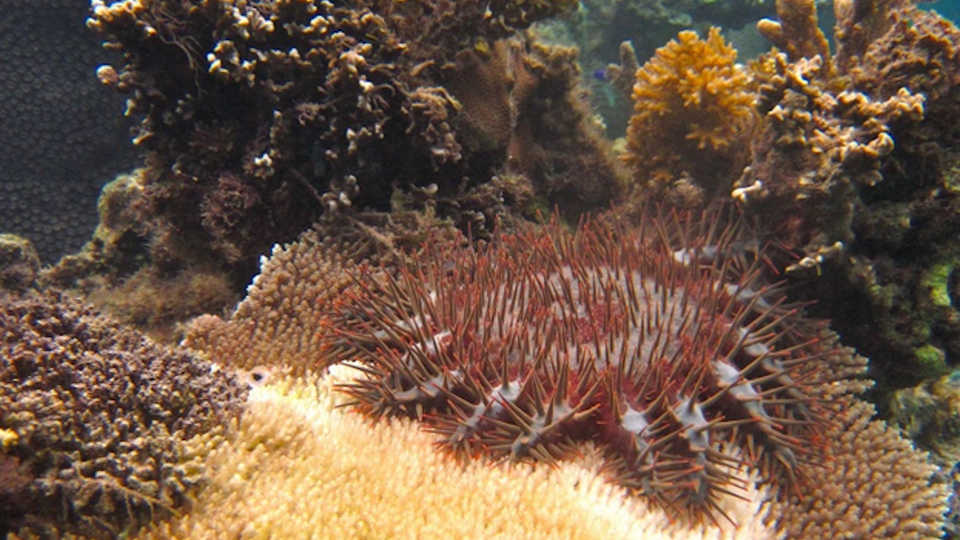Science News
Corals’ Frenemy

The seaweed Sargassum polycystum may give a whole new meaning to the word “frenemy.” Normally the seaweed is the enemy of coral, secreting toxic chemicals, blocking sunlight, and damaging coral with its rough surfaces. But according to a new study, the seaweed may protect corals from crown-of-thorns sea stars (Acanthaster planci), which devastate coral colonies in the South Pacific.
“On the reefs that we study, seaweeds reduce coral growth by both chemical and mechanical means,” says Mark Hay, of the Georgia Institute of Technology and senior author of the new paper in the Proceedings of the Royal Society B. “But we found that seaweeds can benefit corals by reducing predation by the crown-of-thorns sea stars. Corals surrounded by seaweeds were virtually immune to attack by the sea stars, essentially converting the seaweeds from enemies to friends.”
The sea stars’ predation is far more harmful to the corals. “You don’t have to see the crown-of-thorns to know they have been on the reef,” says Cody Clements, a Georgia Tech graduate student and the study’s first author. “You can see where they have been because they leave trails of bleached white coral. All they leave behind are the coral skeletons.” In fact, the sea stars climb onto favored corals, invert their stomachs out through their mouths, and digest away the corals’ living tissues—leaving white skeletons like a trail of breadcrumbs that allowed Clements to not only see where the creatures had been, but also to track them to hiding places in the rocks.
Clements studied corals in an area off the coast of the Fiji islands where some reside in a marine protected area and others in neighboring, unprotected regions. “Marine protected areas where we work are often surrounded by areas of coral reef that are degraded and have lots of seaweeds,” says Clements. “If seaweed is increasing in prevalence in these degraded areas, it’s likely that these [sea star] predators will move into protected areas with more coral and less seaweed. That could compromise conservation efforts in these relatively small marine protected areas established to protect coral.”
To study the relationship between sea star attacks and seaweed cover, Clements used photographs to assess the amount of sea star damage to different coral colonies outside of the marine protected area (MPA), and related the damage to the amount of seaweed on corals in the attacked areas within the MPA. Coral colonies that had been attacked had, on average, just eight percent seaweed coverage, while nearby colonies of the same species that had not been attacked averaged 55 percent coverage of seaweeds.
Clements and Hay aren’t sure if the protective effects of the seaweed are mechanical or chemical—or perhaps both. But when Clements repeated the experiment with plastic aquarium seaweed instead of real seaweed, he found that it also had protective effects, suggesting the seaweed may simply offer physical impediments that make the coral difficult for the sea stars to find or consume.
The varying relationship between coral and seaweed illustrates the kind of complexity scientists have to understand when studying species-diverse ecosystems such as coral reefs, Clements notes. “In a scenario that didn’t involve the crown-of-thorns sea stars, interactions with the seaweed would have been negative for the coral. But when you add the crown-of-thorns into the equation, it can be beneficial for the coral to be associated with the seaweed. Even if it suffers reduced growth, that’s better than being eaten.”
Research such as this can help scientists protect corals, which play an essential role in the survival of reef ecosystems.
Image: Cody Clements, Georgia Tech